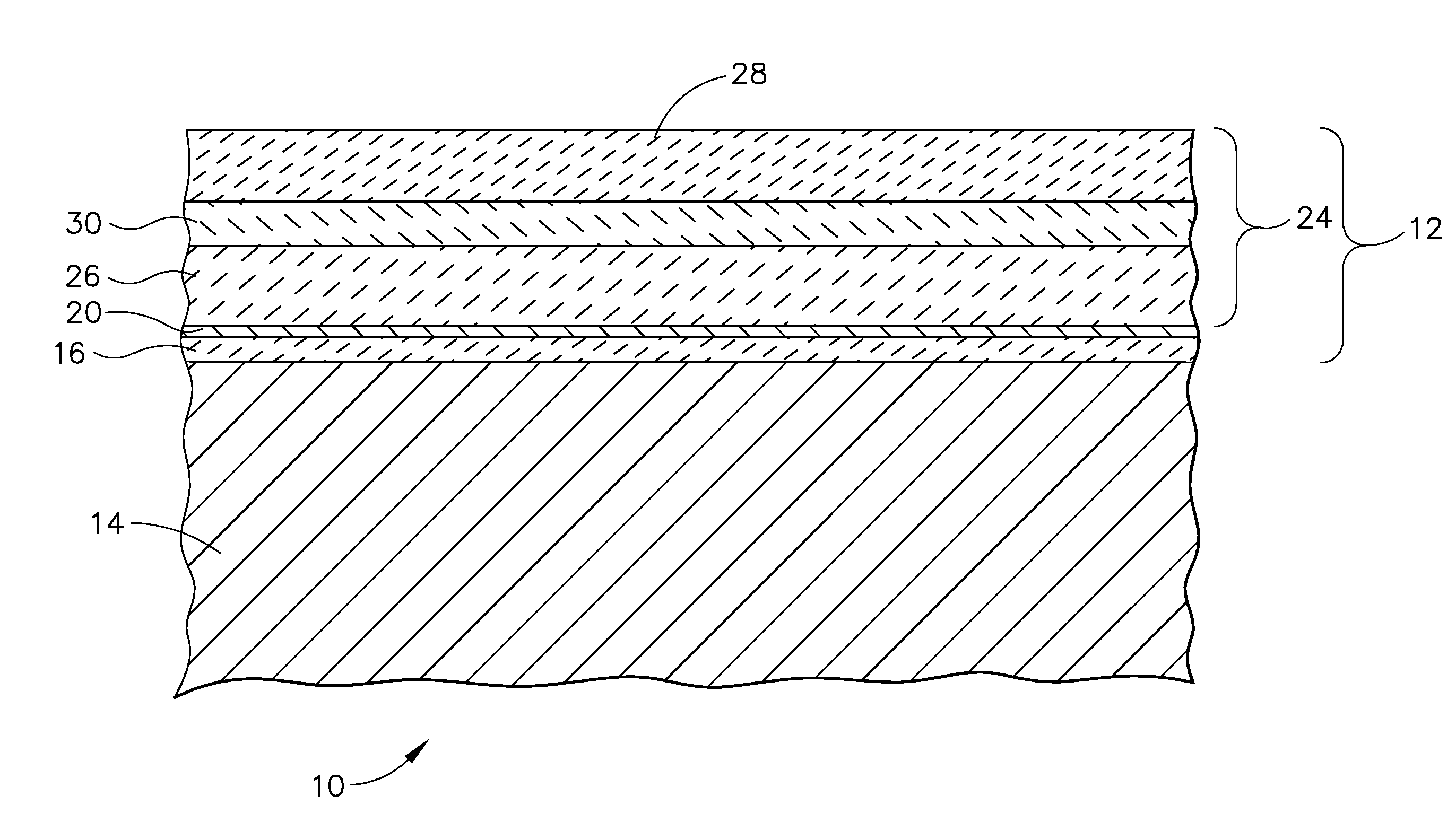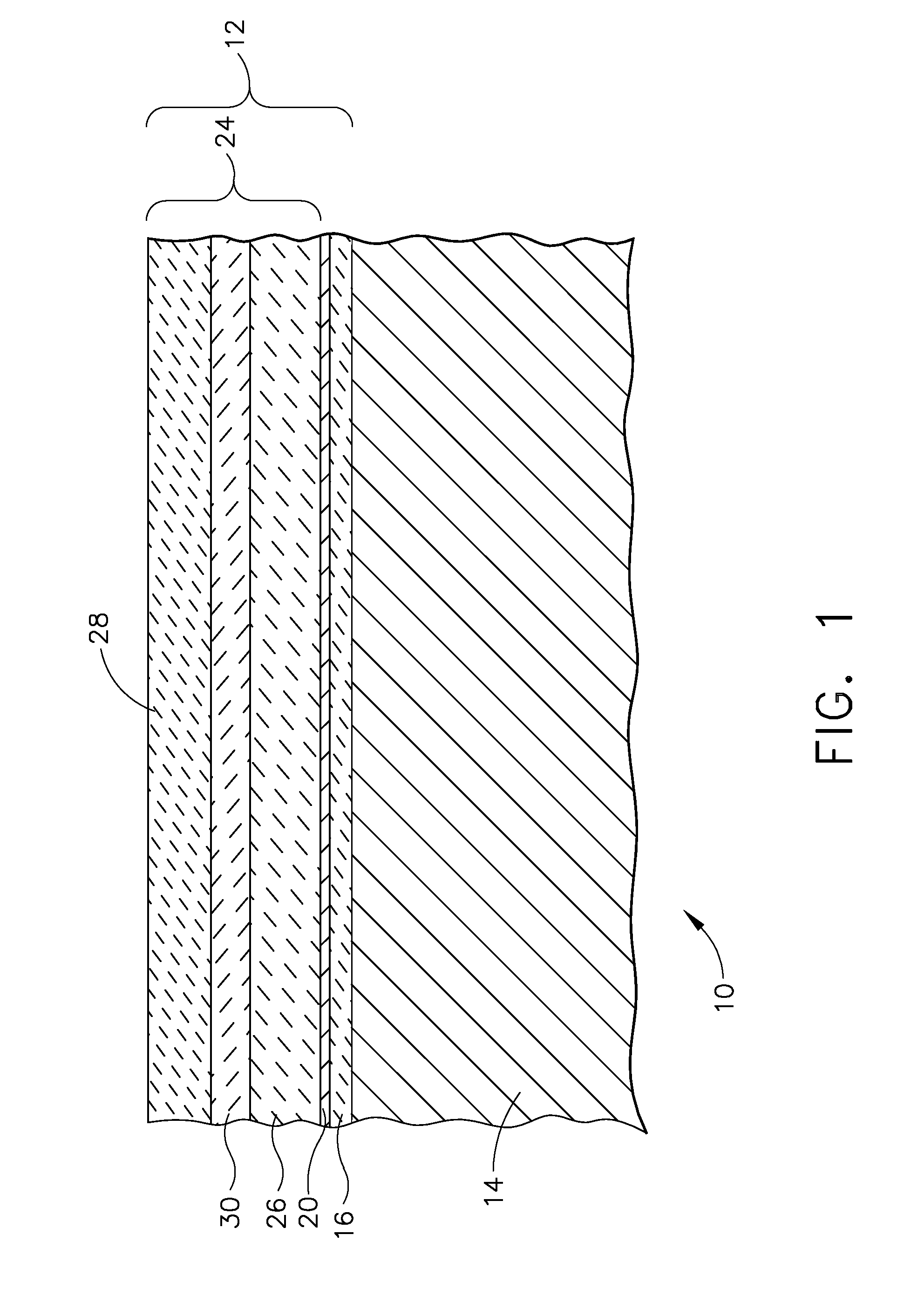Method for Improving Resistance to CMAS Infiltration
- Summary
- Abstract
- Description
- Claims
- Application Information
AI Technical Summary
Benefits of technology
Problems solved by technology
Method used
Image
Examples
example
[0032]A single phase rare earth aluminate sample (LaAlO3) was exposed to CMAS at 2500° F. ((1371° C.)) for 1 hour. The micrograph shown in FIG. 2 illustrates the reaction products. LaAlO3 reacts with CMAS to form a La calcium silicate phase (needle-like shapes). Energy dispersive spectrometer (EDS) analysis showed that the Al2O3 content in the post reaction CMAS is much higher than in the original CMAS, an indication of Al2O3 component from LaAlO3 dissolution in the original CMAS. The dissolution of Al2O3 in CMAS leads to a CMAS melting point increase, as demonstrated by the CMAS / Al2O3 differential thermal analysis (DTA) curves in FIG. 5.
[0033]Thus, this example demonstrates that a rare earth aluminate containing TBC top layer provides CMAS protection in the high temperature range by the formation of the sealing reaction layer containing rare earth calcium silicate, and in the low temperature range (where rare earth calcium silicate formation is sluggish) by the CMAS melting point i...
PUM
| Property | Measurement | Unit |
|---|---|---|
| Length | aaaaa | aaaaa |
| Length | aaaaa | aaaaa |
| Length | aaaaa | aaaaa |
Abstract
Description
Claims
Application Information
 Login to View More
Login to View More - R&D Engineer
- R&D Manager
- IP Professional
- Industry Leading Data Capabilities
- Powerful AI technology
- Patent DNA Extraction
Browse by: Latest US Patents, China's latest patents, Technical Efficacy Thesaurus, Application Domain, Technology Topic, Popular Technical Reports.
© 2024 PatSnap. All rights reserved.Legal|Privacy policy|Modern Slavery Act Transparency Statement|Sitemap|About US| Contact US: help@patsnap.com










